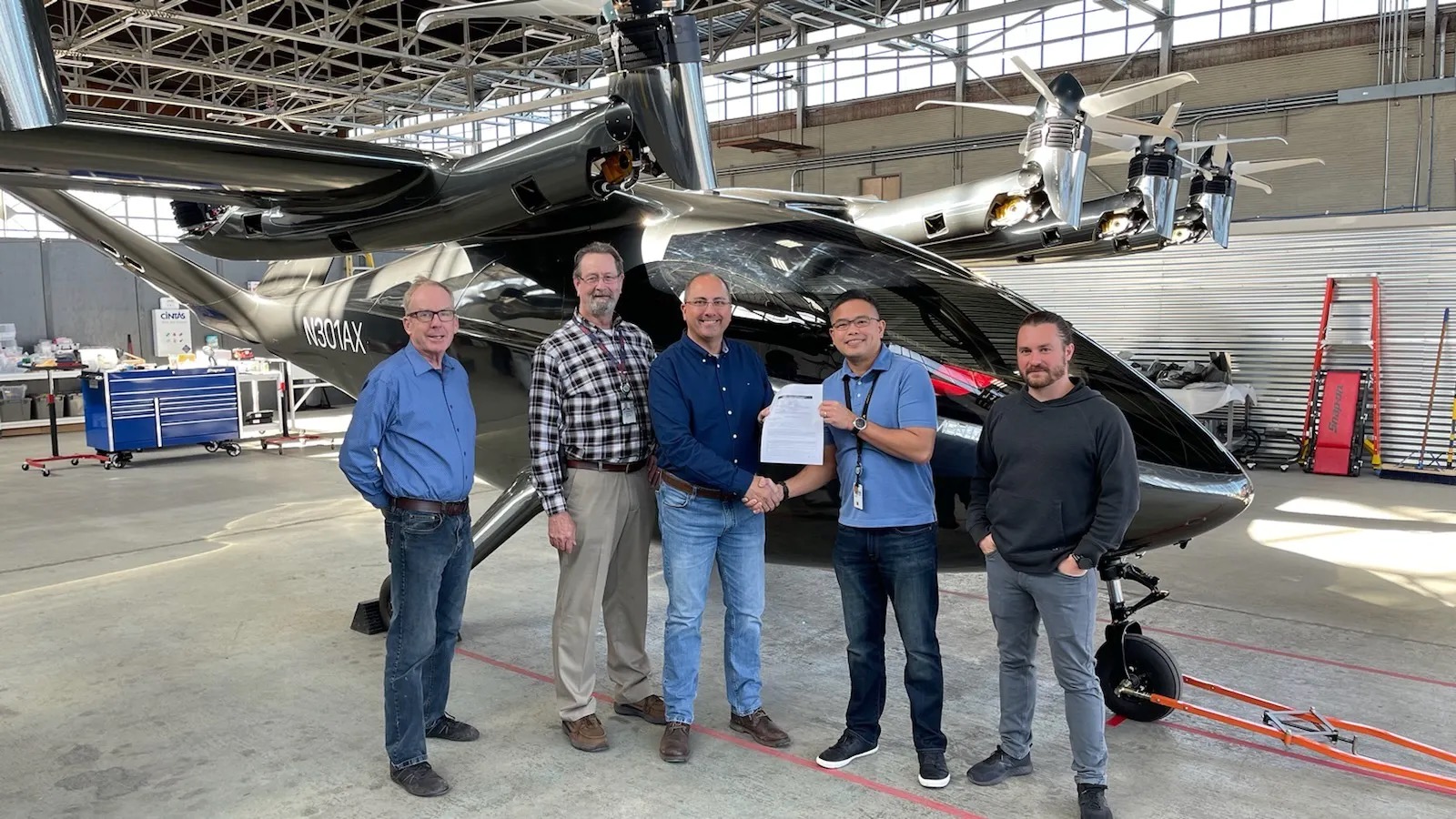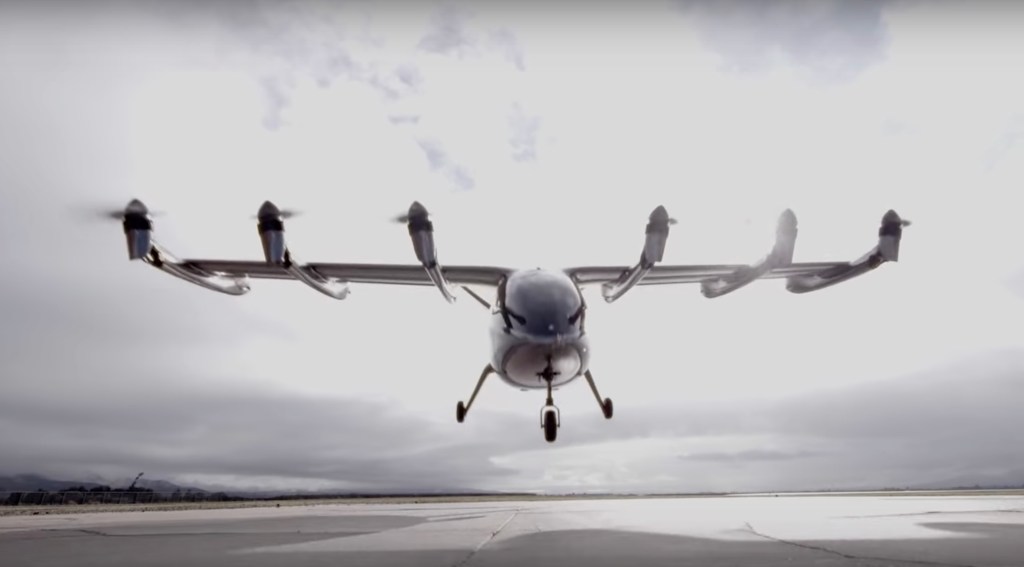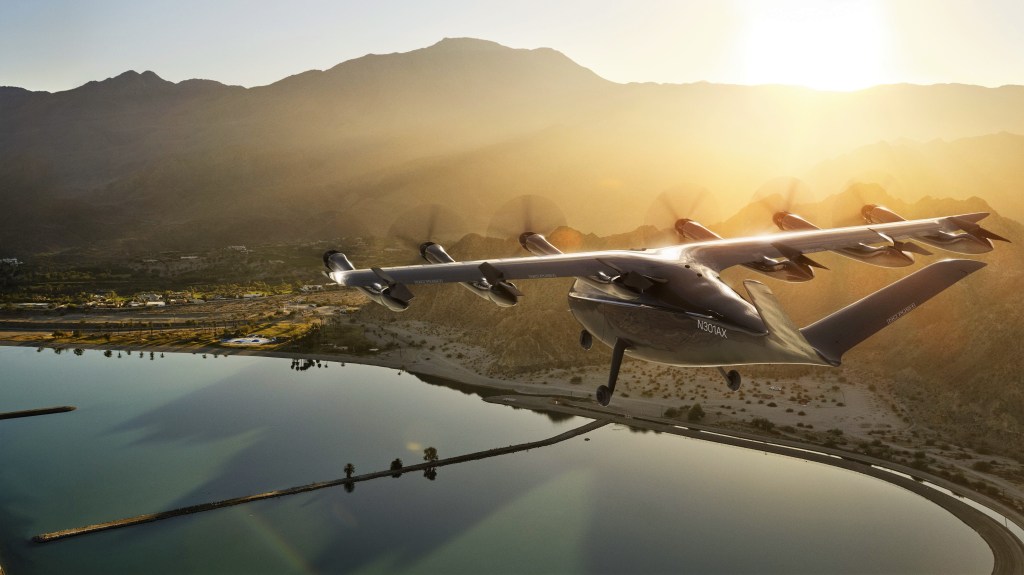
San Francisco-based electric takeoff and landing (eVTOL) vehicle and air taxi company Archer Aviation finished last year with a bang. Now, its co-founders and -CEOs Brett Adcock and Adam Goldstein tell DroneDJ why they think 2022 will be even more exciting.
Events of 2021 will be hard to top. Last September, Archer successfully listed on Wall Street, raising $857.6 million in capital to fuel further development of its Maker eVTOL air taxi. The same month it announced a partnership with the US Air Force to explore uses of similar electric-powered aircraft. In December, Archer received Federal Aviation Administration (FAA) flight worthiness certification of its Maker protype, and scarcely two weeks later began its testing of the craft.
Now, company co-chiefs tell DroneDJ how they plan to keep that momentum going for the coming year.
Following an eventful 2021, what are the objectives for 2022?
Brett Adcock: First and foremost, we’re continuing to build out our flight-testing envelope, with forward flight being the next major milestone on the horizon. Our robust flight-testing program will generate critical data for our engineering and design teams that will in turn be used to refine and improve our forthcoming production aircraft.
On the certification side, we’ll continue working closely with the FAA to remain aligned with our overarching certification timeline. Recent progress — like the airworthiness certificate and G-1 Certification Basis — affirm our expectation that we will earn Type Certification for our production eVTOL aircraft in 2024, and begin commercial operations that year.
Adam Goldstein: We will also be breaking ground on a dedicated facility in 2022, which will be home to our future manufacturing operation. The facility will support our long-term goal of building up to 2,300 aircraft a year and build on our existing relationship with Stellantis, who we’ve partnered with on a definitive OEM agreement to tap into their low-cost supply chain, advanced composite material capabilities, and engineering and design experience.
What do you foresee being the biggest hurdles in the push for eventual certification? Is Archer positioned better than rivals in clearing those?
Brett Adcock: The core challenge is the newness of eVTOLs and the lack of precedent for their commercial use. We’re certifying our aircraft at the same level as commercial airplanes, so we’ll have to demonstrate our vehicle meets those same FAA safety standards, albeit with a brand-new aircraft. Despite the significance of the challenge, though, we’re confident that we’re on the path toward achieving certification and launching our first commercial flights in the coming years.

There are quite a lot of companies working alongside Archer on eVTOL aircraft – those for air taxi use in particular. How many urban air mobility (UAM) manufacturers do you think the sector will support?
Adam Goldstein: While many companies are currently working to develop eVTOL aircraft, the use cases vary significantly. For example, Archer is one of the only companies launching a customer-focused electric airline that will open up new commuting and exploration possibilities in and around cities. Other companies are focused on long-haul or regional travel, while others want to leverage electric flight for activities other than passenger transportation.
So, in many ways, there are only a few other companies with the current means and resources in place to compete in the part of the UAM space where our efforts are focused. With that in mind, we think the sector will be able to support those companies that are able to first achieve commercial certification and then scale their manufacturing and production to support a network of flights that are accessible, convenient, and affordable.
Brett Adcock: Broadly, we believe long-run success will be determined once eVTOLs have had the opportunity to demonstrate their effectiveness. In the immediate future, we see funding and expertise as a key differentiator for companies seeking to build and certify their aircraft, given the significant costs and challenges associated with this undertaking. Archer is fortunate to be among the best-funded eVTOL companies with an industry-leading team that has over 1,200 years of combined eVTOL and aviation industry experience, which bolsters our confidence that our vision will be a successful one in the long run.
There are also numerous designs and tech variations in eVTOL development. Will those differences wind up be determinant in who succeeds and fails, or will other factors decide?
Brett Adcock: Similar to the above question, design variations reflect the different use cases that various eVTOL aircrafts are built for. Maker, for example, has a total of 12 rotors, with six tilting rotors in front of the wing and six fixed rotors used for the transition phase that are only used for hover and cruise. This design is key to Maker’s ability to fly at 150mph for distances of up to 60 miles, enabling intra-city mobility as well as longer range trips to the areas surrounding cities (which we call “micro-exploration”.)
Alternatively, other eVTOL companies that are working on short trips within cities are building wingless multirotors with ranges of 10-15 miles; these design differences emphasize the aircrafts’ varying purposes and seem less likely to determine success and failure from a competition standpoint.
Adam Goldstein: When it comes to ease of use and accessibility, our vision is to create a multi-modal transit system that connects and enhances the existing transportation networks in cities. We envision last-mile transport services to and from vertiports to in-demand locations like airports, all of which will be supported by an app to connect riders with ground transportation options to supplement their trips with Archer, creating a door-to-door travel plan.
Additionally, it’s a priority to strategically locate vertiports in city locations with proximity/access to these ground transit and utilize our Prime Radiant data science technology to proactively meet demand for our service and plan routes according to where need is the highest. All of these initiatives underscore our commitment to making eVTOL travel with Archer as seamless and convenient as possible. After we launch our first flights and build out our fleet of aircraft, we’ll be able to offer even more options to travelers; our partnership with REEF Technologies will similarly allow us to place vertiports in and around the most in-demand parts of cities.

How is Archer organizing that?
Brett Adcock: On the infrastructure side, our partnerships with LA and Miami are helping us to minimize the amount of new infrastructure that needs to be constructed to support our planned eVTOL network launch. We’re collaborating with these cities and other partners to retrofit what already exists; once more, our agreement with REEF will be immensely valuable, allowing us to remake existing parking structures into vertiport locations.
We’re actively engaged with the Los Angeles and Miami city government officials to coordinate on a number of fronts related to eVTOL infrastructure, including permitting and zoning for vertiport locations, retrofitting existing infrastructure to support eVTOL travel, sustainability initiatives, operational tempo (what hours we can operate and how many aircraft at once) and more.
Any other major focal points?
Adam Goldstein: Noise pollution is understandably a serious question for eVTOL networks given the scale at which we expect to eventually operate. Fortunately, we’ve gone to great lengths to make our aircraft minimally-disruptive and seen strong outcomes already. For example, Maker emits only 45 decibels of sound —100x quieter than helicopters. The aircraft’s 12 rotors spin slower than a helicopters’ blades, thus generating significantly less noise. We see this as a key feature of any eVTOL network that hopes to operate in and around cities.
FTC: We use income earning auto affiliate links. More.



Comments